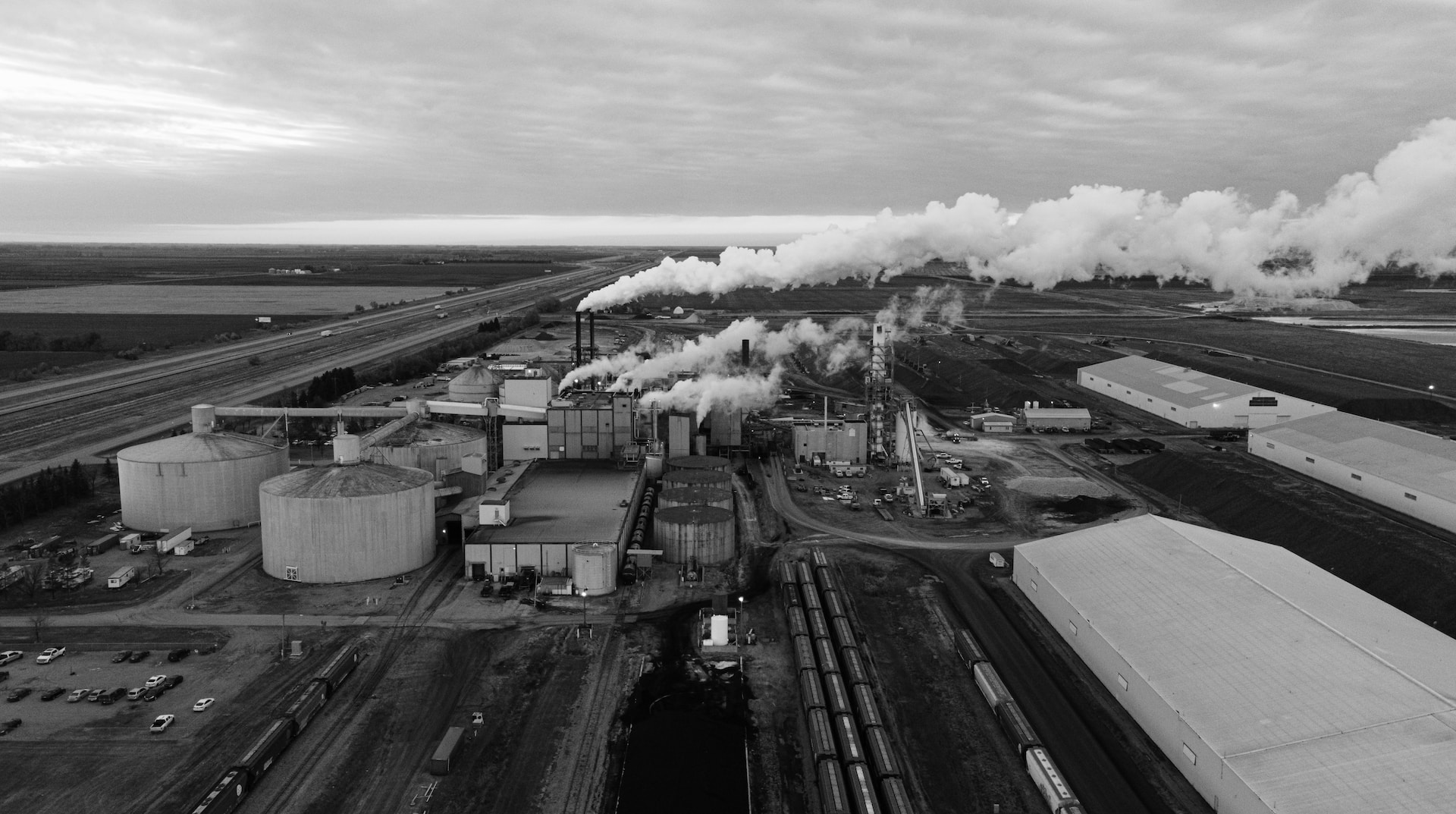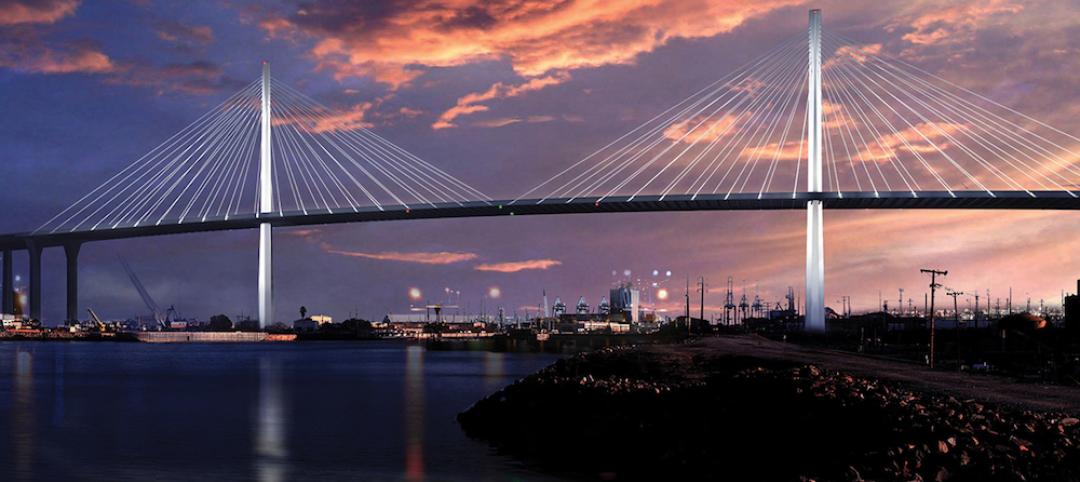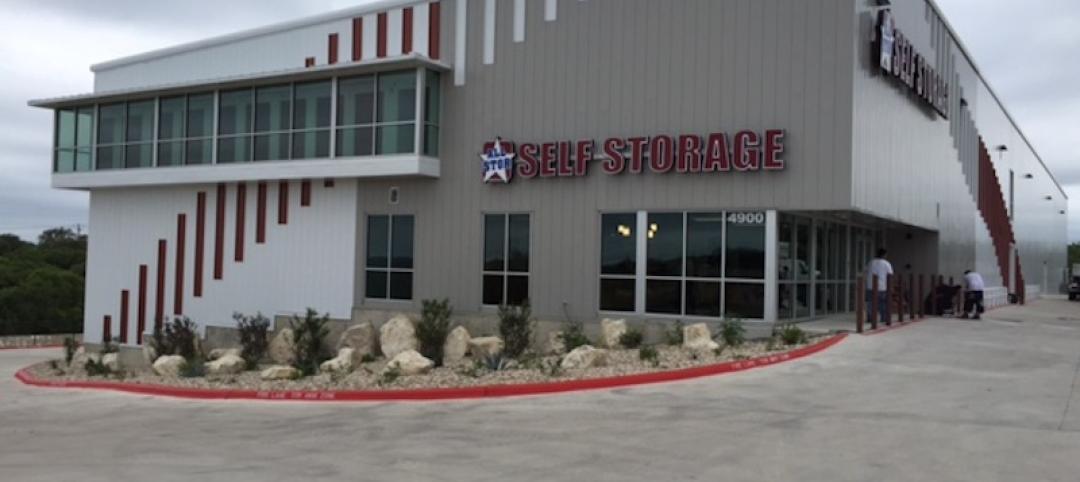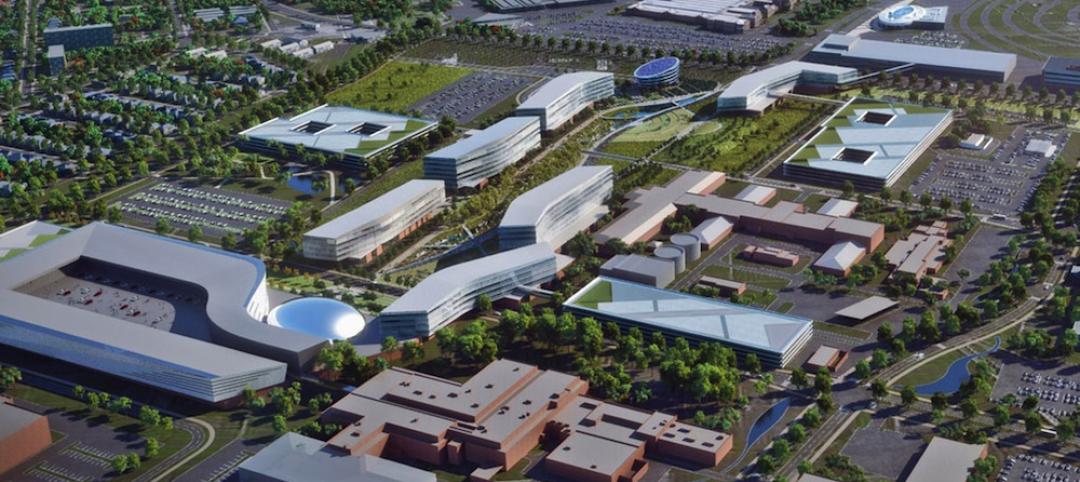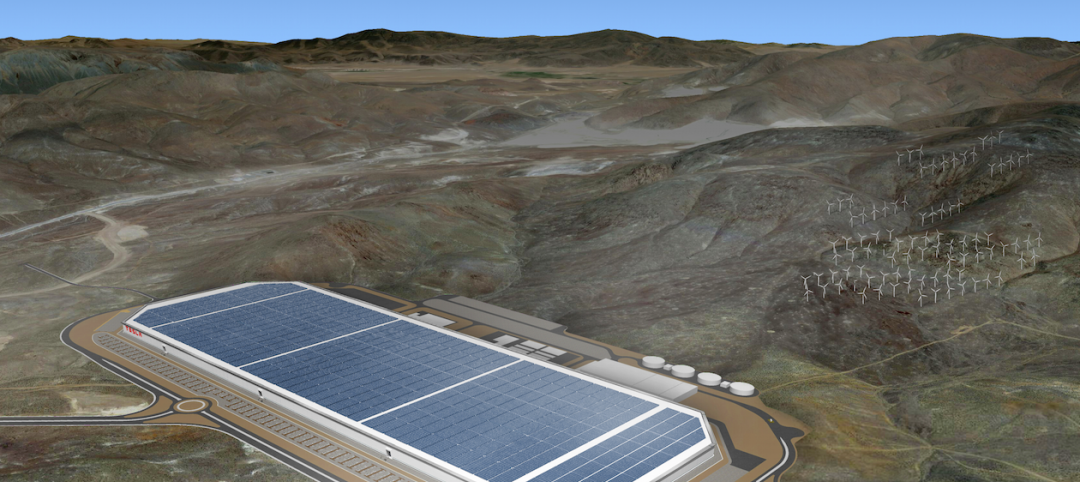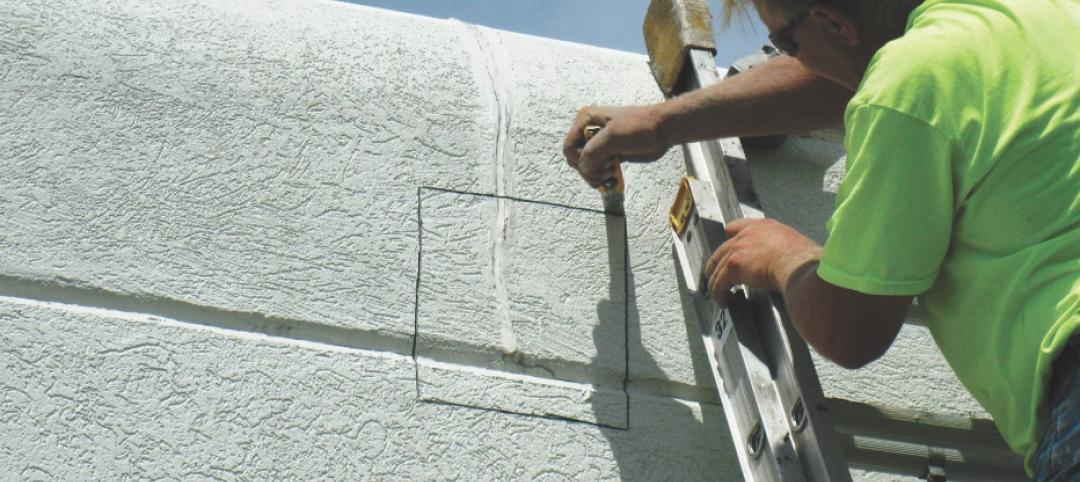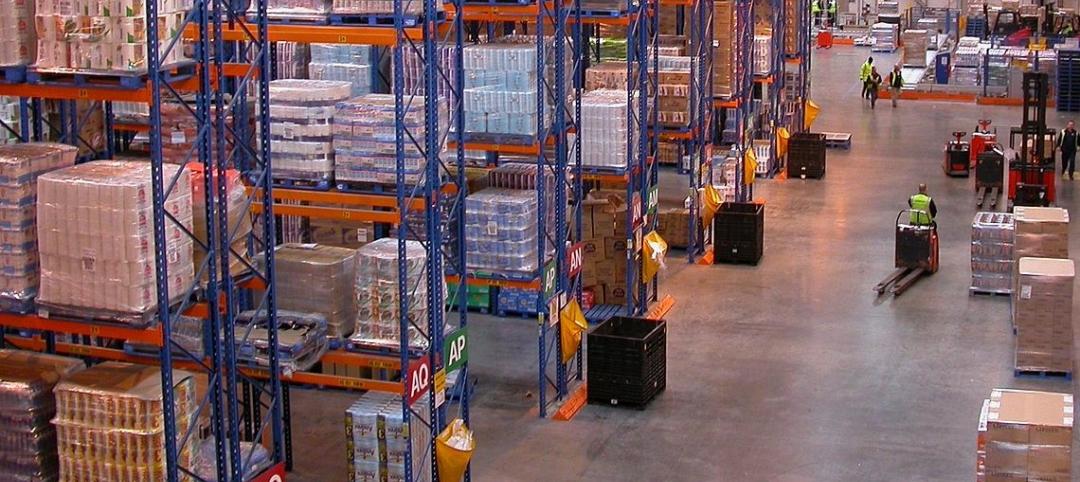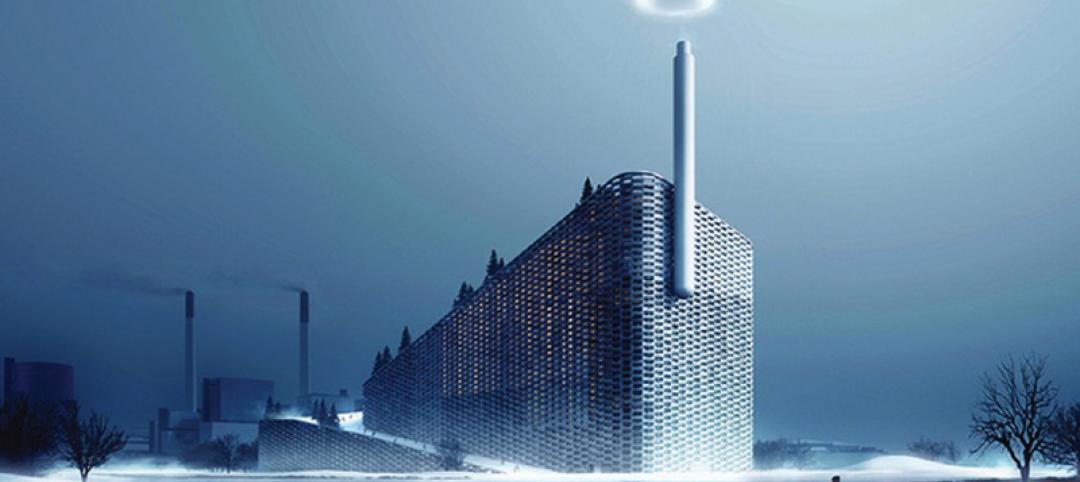The embodied carbon (EC) intensity in core and shell industrial buildings in the U.S. averages 23.0 kilograms per sf, according to a recent analysis of 26 whole building life-cycle assessments. That means a 300,000-sf warehouse would emit 6,890 megatons of carbon over its lifespan, or the equivalent of the carbon emitted by 1,530 gas-powered cars driven for one year.
Those sobering estimates come from a new benchmark study, “Embodied Carbon U.S. Industrial Real Estate,” which advocates for the measuring and reducing of EC in core and shell industrial buildings, one of the more vibrant commercial construction sectors.
The report was produced by BranchPattern, a Kansas City-based building consultancy dedicated to creating a better built environment. BranchPattern’s study partners for this report include Prologis, Brookfield Properties, IDI Logistics, Bridge Industrial, and Affinius Capital.
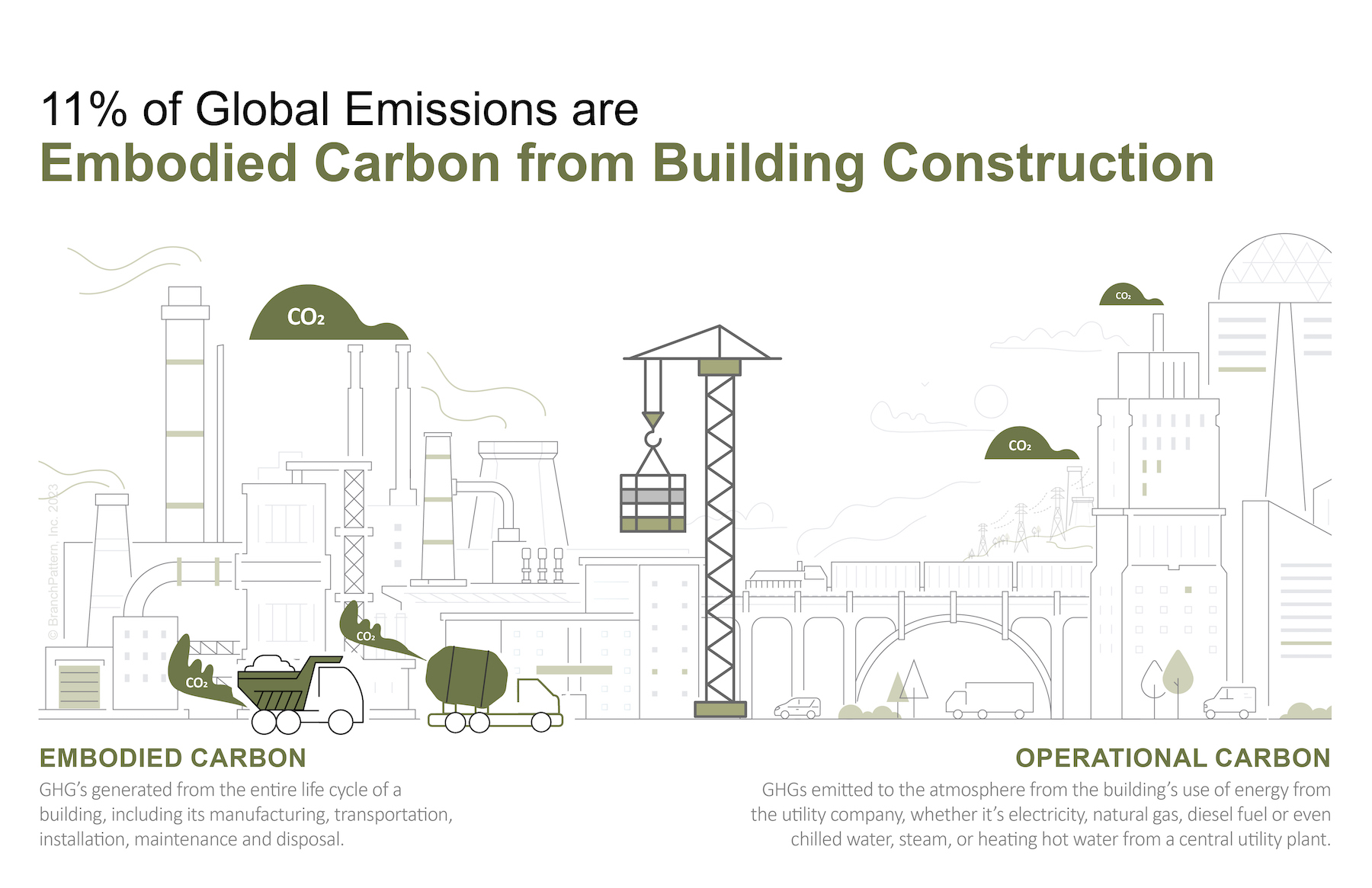
“We are at a pivotal moment for owners and developers of real estate to look beyond the greenhouse gasses emitted during building operations,” says Chris Brown, IDI Logistics’ Solar Development and ESG Director. “Working with industry peers, key partners, and suppliers to create pathways to lower carbon materials, design and construction techniques is an integral part of reducing the impact of buildings have in climate change.”
Building operations and building construction account for 28% and 11%, respectively, of global greenhouse gas emissions, according to the International Energy Agency. As buildings have become more energy efficient, operational carbon has been reduced. Therefore, addressing EC emissions “will become increasingly critical to meet climate goals,” states BranchPattern’s report, especially given that the global building area for industrial typologies is projected to double by 2050.
Right now, most of the available EC data are derived from lifecycle assessments of multifamily and office buildings. But based on conservative assumptions, EC is projected to account for 17.4% of a typical industrial building’s total emissions over 60 years. The report calls for greater access to EC measurement tools and comparative data that can help the industrial sector making informed design and construction decisions.
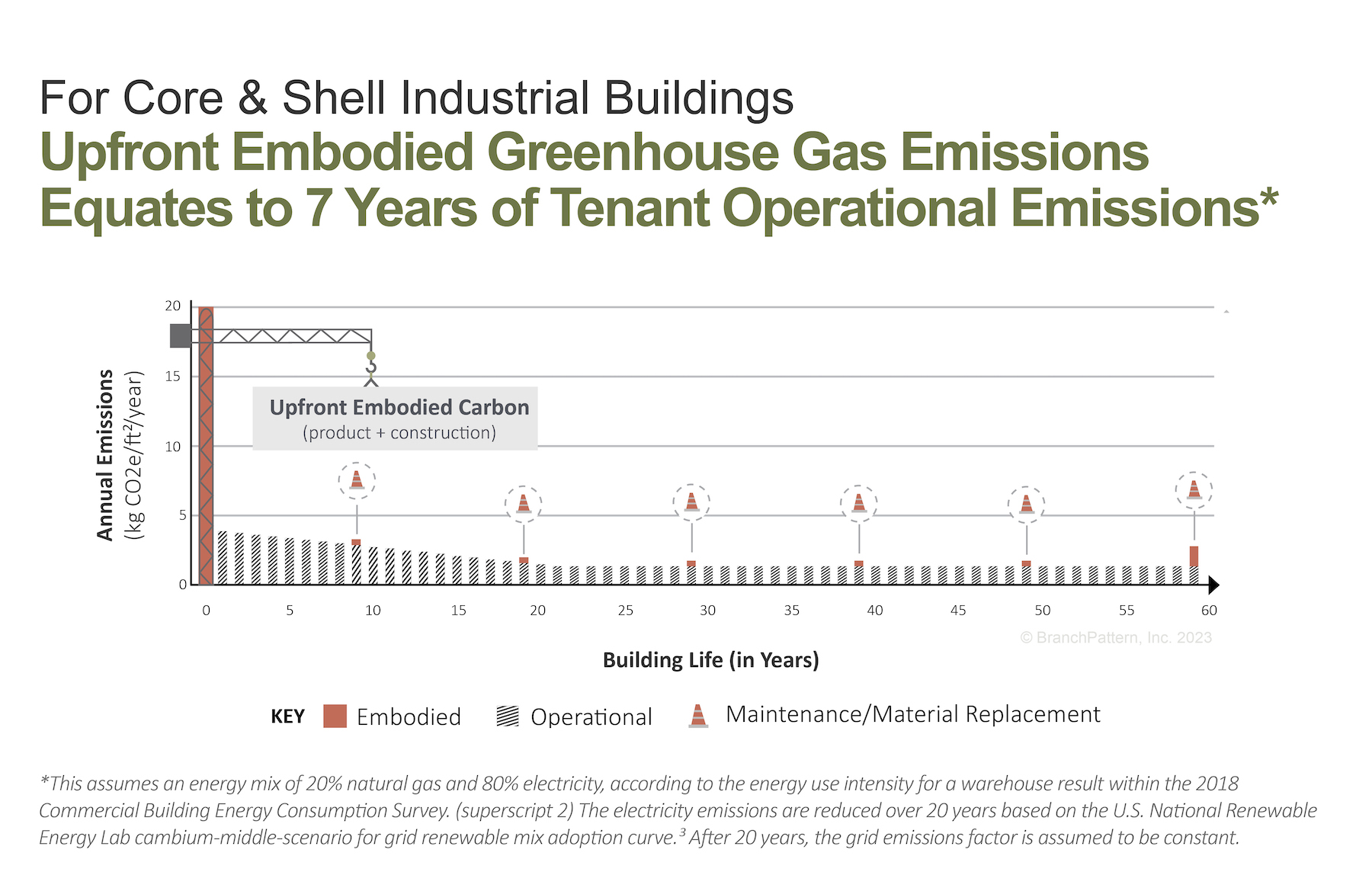
Stakeholders within an industrial building project have varying responsibilities and financial interests in reducing EC in their buildings. The developer, for example, makes decisions about building materials and design. The tenant, on the other hand, might participate in improvements that include MEP systems and interior finishes.
A small but telling sample
In 2022, BranchPattern conducted 46 lifecycle assessments, of which 26 for nine separate real estate developers or owners in six geographic regions of the U.S. are included in its report. The analyses were confined to Class A core and shell industrial warehouses of similar scope. The reference period for the lifetimes of the buildings was 60 years.
BranchPattern compared its EC intensity finding with a 2017 Carbon Benchmark Study of two buildings whose average EC intensity was 20.2 kg per sf.
The report concedes that its own sample isn’t large enough from which to draw definitive conclusions. “A larger, more robust dataset is required to determine regional variation with statistical significance,” the report states. That being said, BranchPattern’s study shows “a strong, positive, linear correlation” between a building’s size and its EC emissions.
The report finds that, on average, 55% of an industrial warehouse’s EC comes from its structure and enclosure, such as slab-on-grade, exterior walls, framing, and roofdeck. Consequently, an optimal EC reduction strategy addresses emissions from building materials like concrete and steel, which alone account for 11% and 10%, respectively, of global greenhouse gas emissions. For example, cement accounts for about 80% of the carbon emissions from a traditional concrete mix. Switching that mix from 100% ordinary Portland Cement to 50% fly ash/slag cement could reduce the mix’s carbon footprint by approximately 40%.
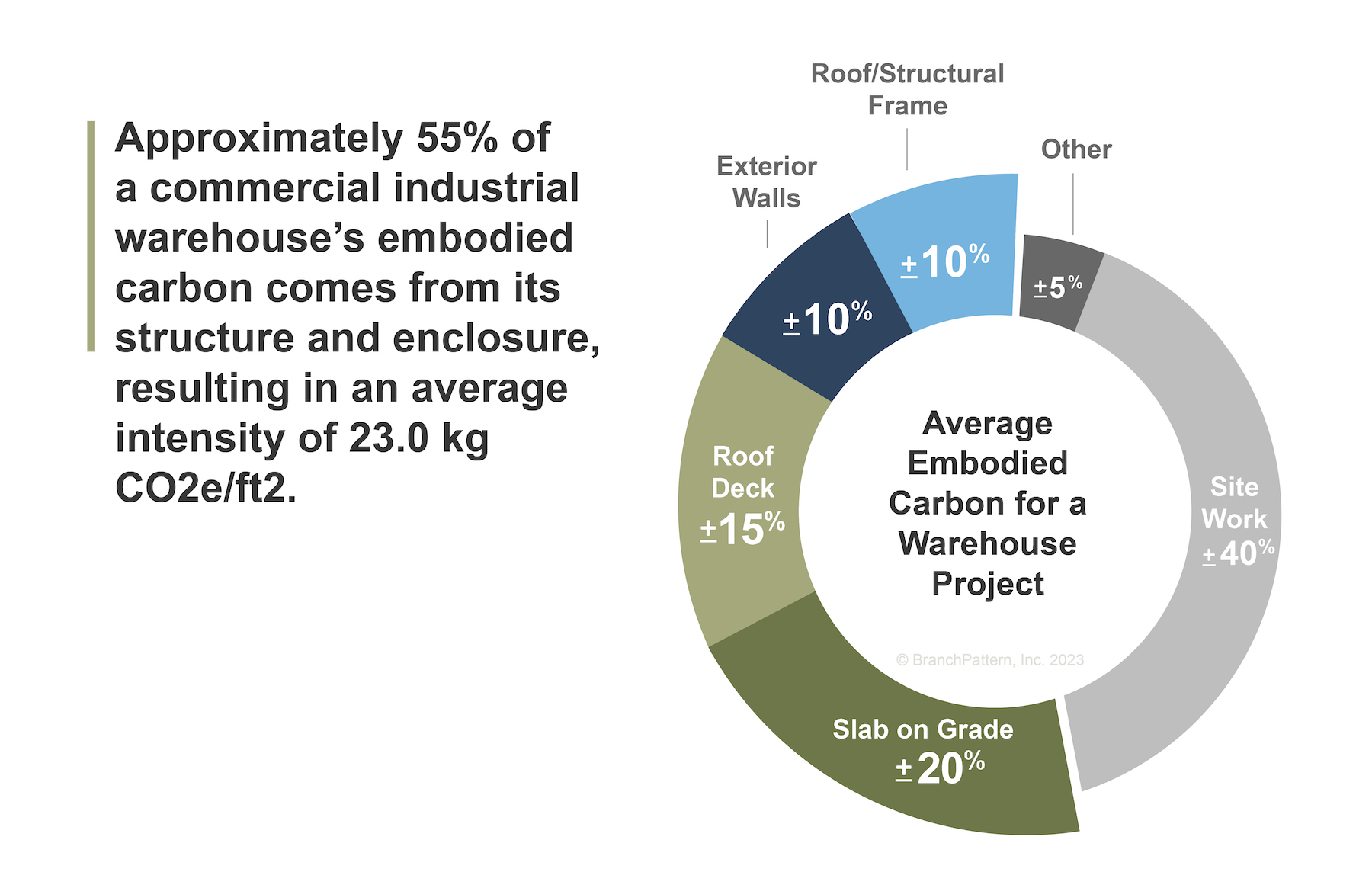
Buildings might also be designed to reduce their overall concrete volume via alternate wall assemblies or insulated metal panels. BranchPattern’s report estimates that substituting mass timber for steel or concrete assemblies would reduce the carbon footprint from the building’s structure/enclosure by 50%. (Affinius Capital recently completed a 161,200-sf Class A warehouse with mass timber, resulting in a 60% reduction in EC compared to a concrete build.) Even using Electric Arc Furnace-produced steel instead of basic oxygen furnace-produced steel cuts EC emissions by 40% to 60%.
Electric Arc Furnace steel is more likely to have a higher recycled content. Recycled materials in general typically have lower EC than virgin materials. However, the report observes that conventional demolition is still cheaper than recovering materials, especially wood. “A building designed for disassembly may have greater residual value, as the integrity of more materials is preserved.”
A call to action
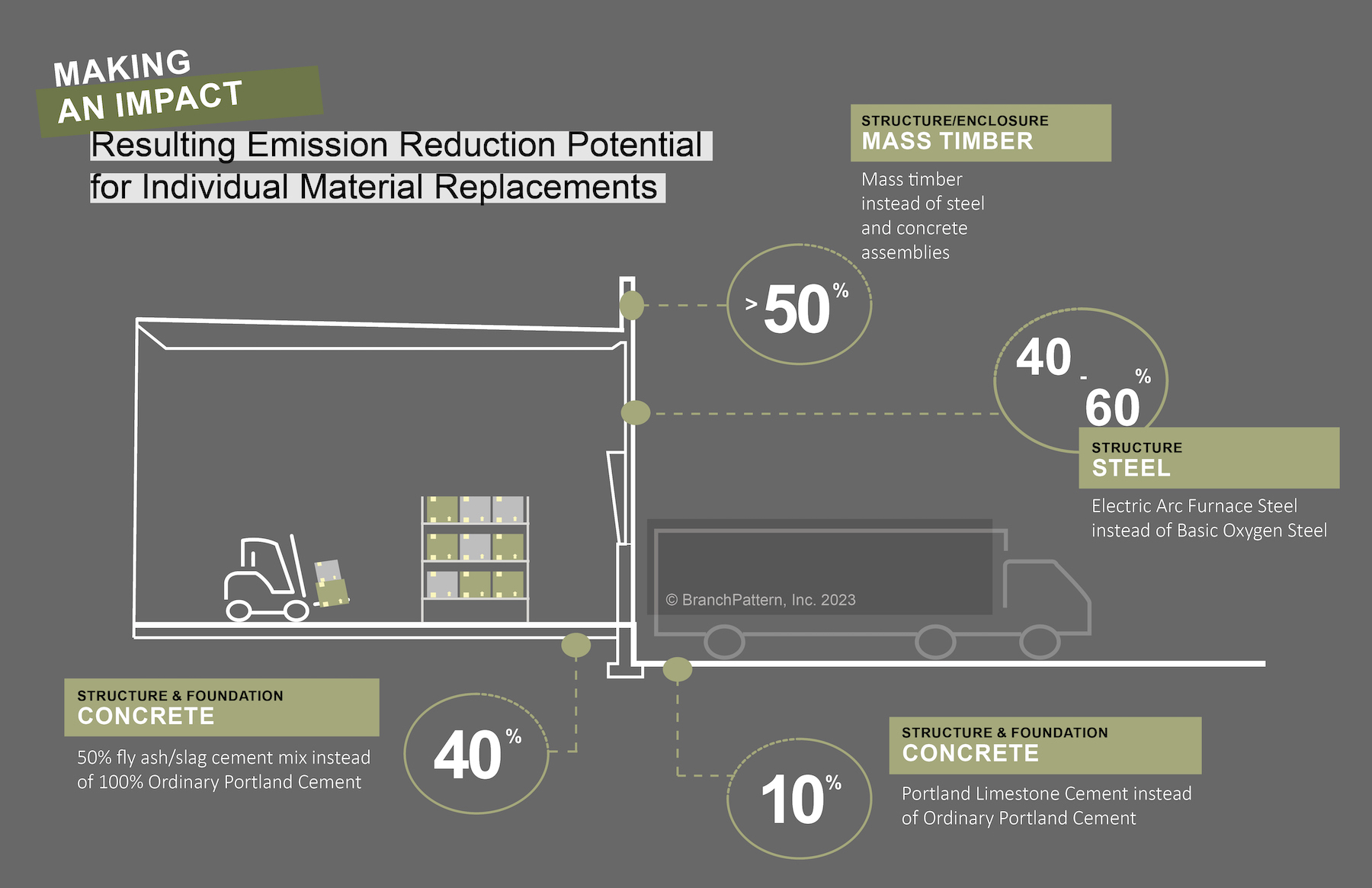
The Paris Climate Accords have set a goal of reducing greenhouse gas emissions 40% by 2030, compared to 1990 emissions. To achieve that goal, “we must now focus on embodied carbon,” the BranchPattern report states. That will require transparent and clear carbon accounting methods that support stakeholder engagement. “To reduce, we must measure,” asserts the report.
Government funding and policy changes are increasing the development and implementation of low-carbon construction solutions. Green building certification programs “will continue to play a significant role mainstreaming embodied carbon knowledge within various building sectors,” the report predicts. The availability of lower-carbon materials will increase and be cost competitive. Engineering solutions in areas like carbon capture, utilization and storage will advance.
“Embodied carbon related emission reductions are possible, necessary, and promising,” the report concludes.
Related Stories
Industrial Facilities | Jun 16, 2016
Western U.S. ports prepare to handle increased shipping from expanded Panama Canal
The expansion of the Panama Canal might make some eastern U.S. ports more attractive to large-vessel operators. But West Coast ports aren’t ready to roll over and play dead just yet.
Movers+Shapers | Jun 16, 2016
THE PANAMAX EFFECT: Panama Canal expansion could trigger an East Coast construction boom
Cities lining the East Coast and Gulf Coast, from New York City to New Orleans, are spending big bucks to accommodate the larger vessels that will now be able to cross a wider and deeper Panama Canal.
Self-Storage Facilities | Apr 20, 2016
Design is now a factor in storage wars
Self-storage facilities are blending into neighborhoods better, and competing for rentals from women, their primary customers.
Industrial Facilities | Apr 13, 2016
Ford begins 10-year plan to centralize Dearborn, Mich., campus
The company said that it will rebuild 7.5 million sf of work space over a 10-year period, which will shift 30,000 employees from 70 buildings now into two primary locations.
Game Changers | Feb 5, 2016
Tesla: Battery storage is not just about electric vehicles
With his $5 billion, 13.6 million-sf Gigafactory, Tesla’s Elon Musk seeks to change the economics of battery energy storage, forever.
Game Changers | Feb 4, 2016
GAME CHANGERS: 6 projects that rewrite the rules of commercial design and construction
BD+C’s inaugural Game Changers report highlights today’s pacesetting projects, from a prefab high-rise in China to a breakthrough research lab in the Midwest.
| Jan 14, 2016
How to succeed with EIFS: exterior insulation and finish systems
This AIA CES Discovery course discusses the six elements of an EIFS wall assembly; common EIFS failures and how to prevent them; and EIFS and sustainability.
Giants 400 | Sep 10, 2015
INDUSTRIAL SECTOR GIANTS: Stantec, Turner, Jacobs among top industrial AEC firms
BD+C's rankings of the nation's largest industrial sector design and construction firms, as reported in the 2015 Giants 300 Report
Industrial Facilities | Sep 3, 2015
DATA CENTER SECTOR GIANTS: Fluor, Gensler, Holder Construction among top data center AEC firms
BD+C's rankings of the nation's largest data center sector design and construction firms, as reported in the 2015 Giants 300 Report
Industrial Facilities | Aug 18, 2015
BIG crowdfunds steam ring prototype for Amager Bakke power plant project
The unusual power plant/ski slope project in Copenhagen will feature a smokestack that will release a ring-shaped puff for every ton of CO2 emitted.


